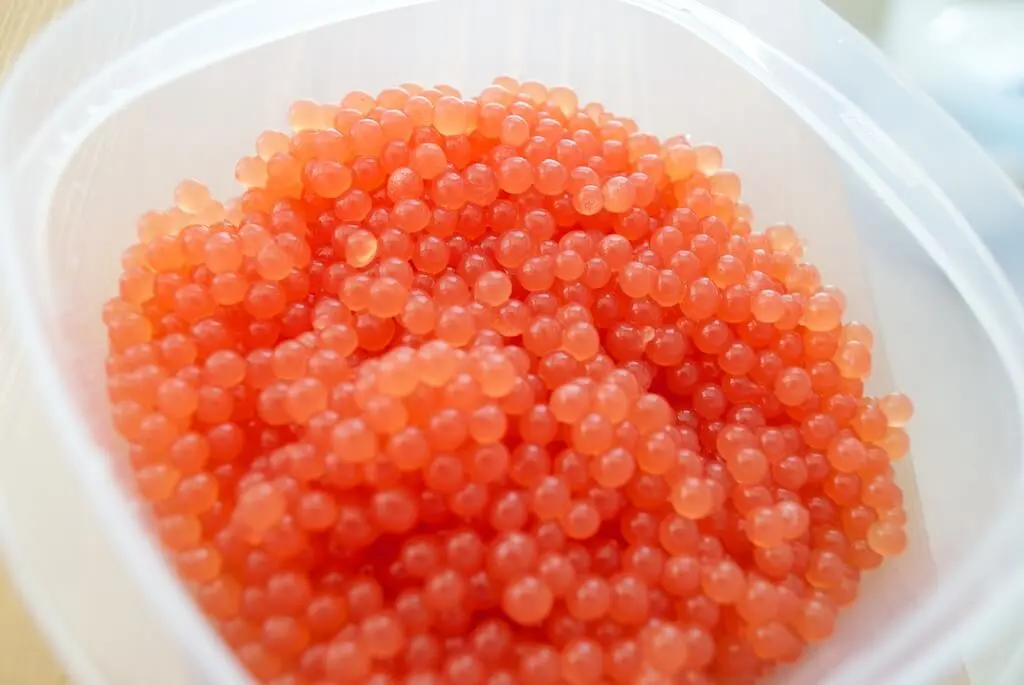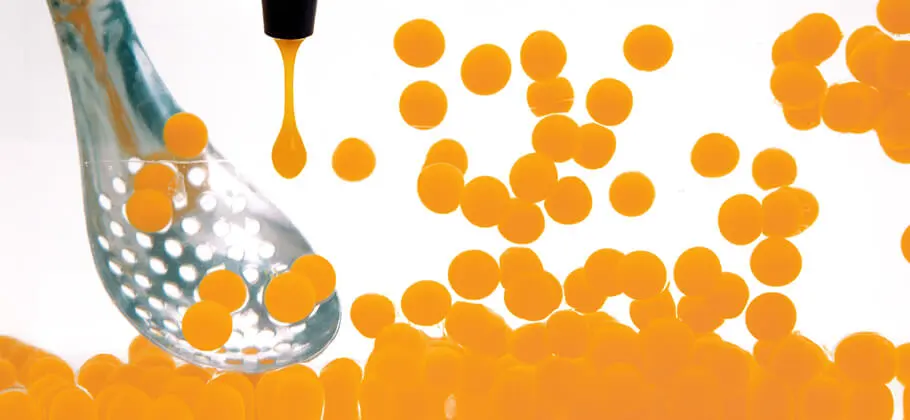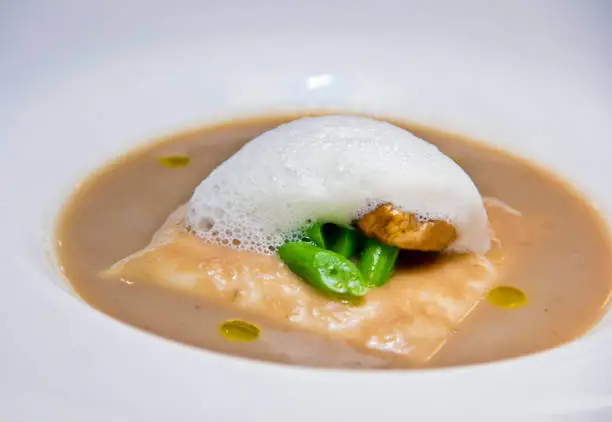Molecular Gastronomy: The Combination of Science and Art
Molecular gastronomy, also known as molecular cuisine, is a culinary art in which all cooking techniques and results are explained by scientific methods and precisely controlled by numbers. It has broken and reconstructed cooking with modern scientific theories of physics, chemistry, biology, etc. The theory of molecular gastronomy studies the observation and understanding of the relationship between the temperature and the cooking time of food during the cooking process, and then adds different substances to result in various physical and chemical changes in the food. People deconstruct, reorganize and apply it after fully mastering the technology, and subvert traditional cooking and food appearance.

Completing molecular gastronomy must rely on modern equipment. The most common technique is sous vide cooking which uses the principle that protein will not solidify below 65℃. Professional and precise instruments can help us control the temperature between 38℃ and 65℃, and heat food for 1 hour to 20 hours so that the meat is mature instead of being hard and old. This is an operation method that accurately controls maturity and produces good-quality food without relying too much on experience.
The best way to cook is to put food in a plastic bag that can withstand high temperatures. After exhausting the air to a vacuum state, put it into the water with a calculated temperature and soak it for a specified time. When being slowly soaked, the food can release the most sodium glutamate at the most suitable temperature, maintaining the original taste and realizing the best texture and nutrition. How long should sous vide cooking last depends on the types of foods, with a few hours or several days being all right.

Caviar is a very common food in molecular cuisine. However, the "caviar" we mention here is not real caviar. With the application of molecular gastronomy techniques, juice or sauce and a precise proportion of sodium alginate will be added and suctioned with a syringe, and dripped in a solution mixed with calcium. Then the chemical reaction between them forms a thin elastic protective film on the surface of the juice or sauce. At this time, the food looks like caviar, but we can taste any flavor.

The spherification technique is also interesting. It can be divided into direct spherification and reverse spherification. In terms of the production process, the direct one is obtained by adding the algin into the calcium solution, and the reverse one is obtained by adding liquid with calcium lactate into the algin solution. About the taste, the small balls (the above-mentioned caviar) made by direct spherification have a clear crispness when bitten in the mouth. And the effect of reverse spherification is that the balls are filled with liquid and will go popped when the skin is broken so that they must be eaten as soon as possible. Reverse spherification is widely used, and materials containing high calcium or high concentration of alcohol are especially suitable for reverse spherification.

Emulsification mainly refers to the process of mixing water and oil together in the beginning, and the typical application is to make mayonnaise. But with the in-depth research and the emergence of a new generation of emulsifiers, people have also found more applications of emulsification, such as making foam. Soybean lecithin is the key factor in obtaining foam. We know that foam is created by a large amount of air entering the liquid. In addition to allowing two incompatible liquids (such as water and oil) to fuse together, emulsifiers can also reduce the tension between water and air, resulting in stable foams.

Apart from the classic techniques highlighted above, liquid nitrogen and fumigation techniques are commonly used in contemporary molecular cuisine, either. The most valuable part of molecular gastronomy is to observe cooking and food with scientific thinking, to find the infinite possibilities behind them, and to think about the essence of cooking.

Completing molecular gastronomy must rely on modern equipment. The most common technique is sous vide cooking which uses the principle that protein will not solidify below 65℃. Professional and precise instruments can help us control the temperature between 38℃ and 65℃, and heat food for 1 hour to 20 hours so that the meat is mature instead of being hard and old. This is an operation method that accurately controls maturity and produces good-quality food without relying too much on experience.
The best way to cook is to put food in a plastic bag that can withstand high temperatures. After exhausting the air to a vacuum state, put it into the water with a calculated temperature and soak it for a specified time. When being slowly soaked, the food can release the most sodium glutamate at the most suitable temperature, maintaining the original taste and realizing the best texture and nutrition. How long should sous vide cooking last depends on the types of foods, with a few hours or several days being all right.

Caviar is a very common food in molecular cuisine. However, the "caviar" we mention here is not real caviar. With the application of molecular gastronomy techniques, juice or sauce and a precise proportion of sodium alginate will be added and suctioned with a syringe, and dripped in a solution mixed with calcium. Then the chemical reaction between them forms a thin elastic protective film on the surface of the juice or sauce. At this time, the food looks like caviar, but we can taste any flavor.

The spherification technique is also interesting. It can be divided into direct spherification and reverse spherification. In terms of the production process, the direct one is obtained by adding the algin into the calcium solution, and the reverse one is obtained by adding liquid with calcium lactate into the algin solution. About the taste, the small balls (the above-mentioned caviar) made by direct spherification have a clear crispness when bitten in the mouth. And the effect of reverse spherification is that the balls are filled with liquid and will go popped when the skin is broken so that they must be eaten as soon as possible. Reverse spherification is widely used, and materials containing high calcium or high concentration of alcohol are especially suitable for reverse spherification.

Emulsification mainly refers to the process of mixing water and oil together in the beginning, and the typical application is to make mayonnaise. But with the in-depth research and the emergence of a new generation of emulsifiers, people have also found more applications of emulsification, such as making foam. Soybean lecithin is the key factor in obtaining foam. We know that foam is created by a large amount of air entering the liquid. In addition to allowing two incompatible liquids (such as water and oil) to fuse together, emulsifiers can also reduce the tension between water and air, resulting in stable foams.

Apart from the classic techniques highlighted above, liquid nitrogen and fumigation techniques are commonly used in contemporary molecular cuisine, either. The most valuable part of molecular gastronomy is to observe cooking and food with scientific thinking, to find the infinite possibilities behind them, and to think about the essence of cooking.
